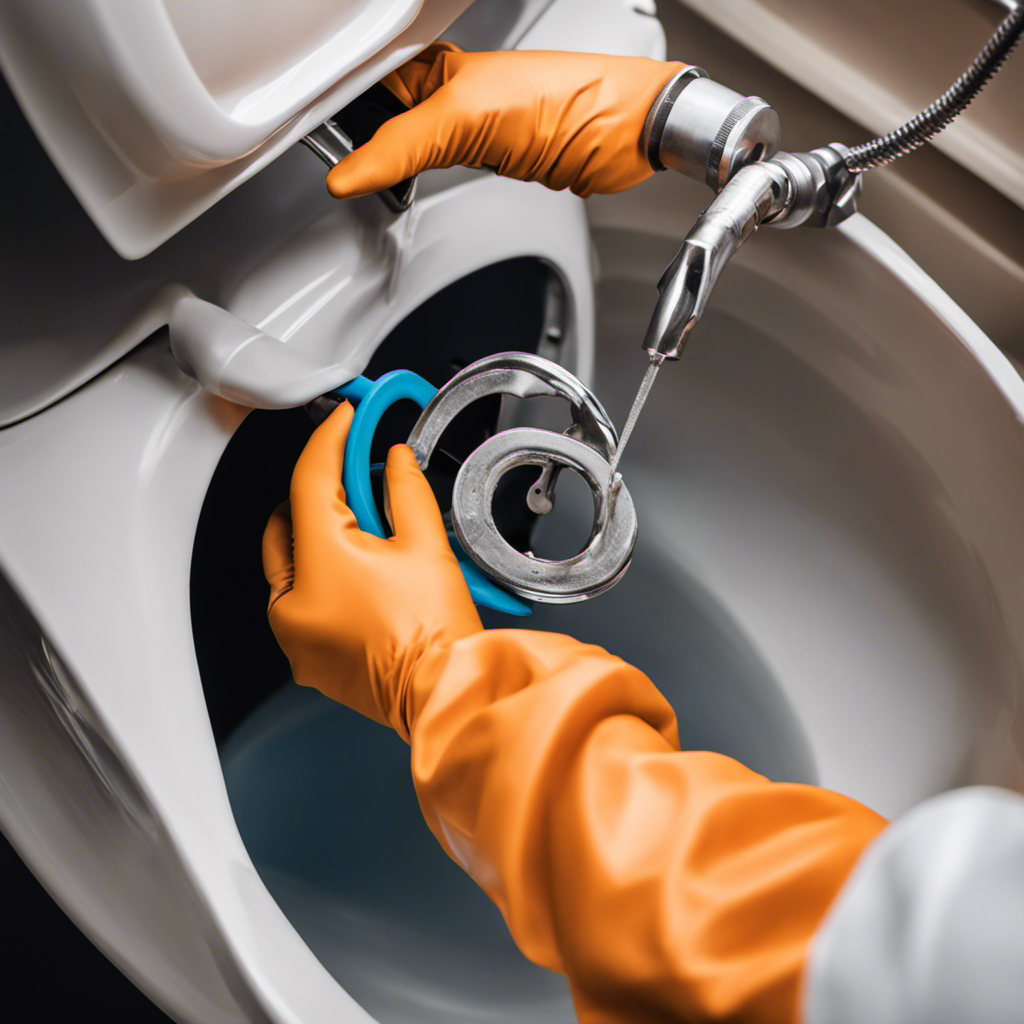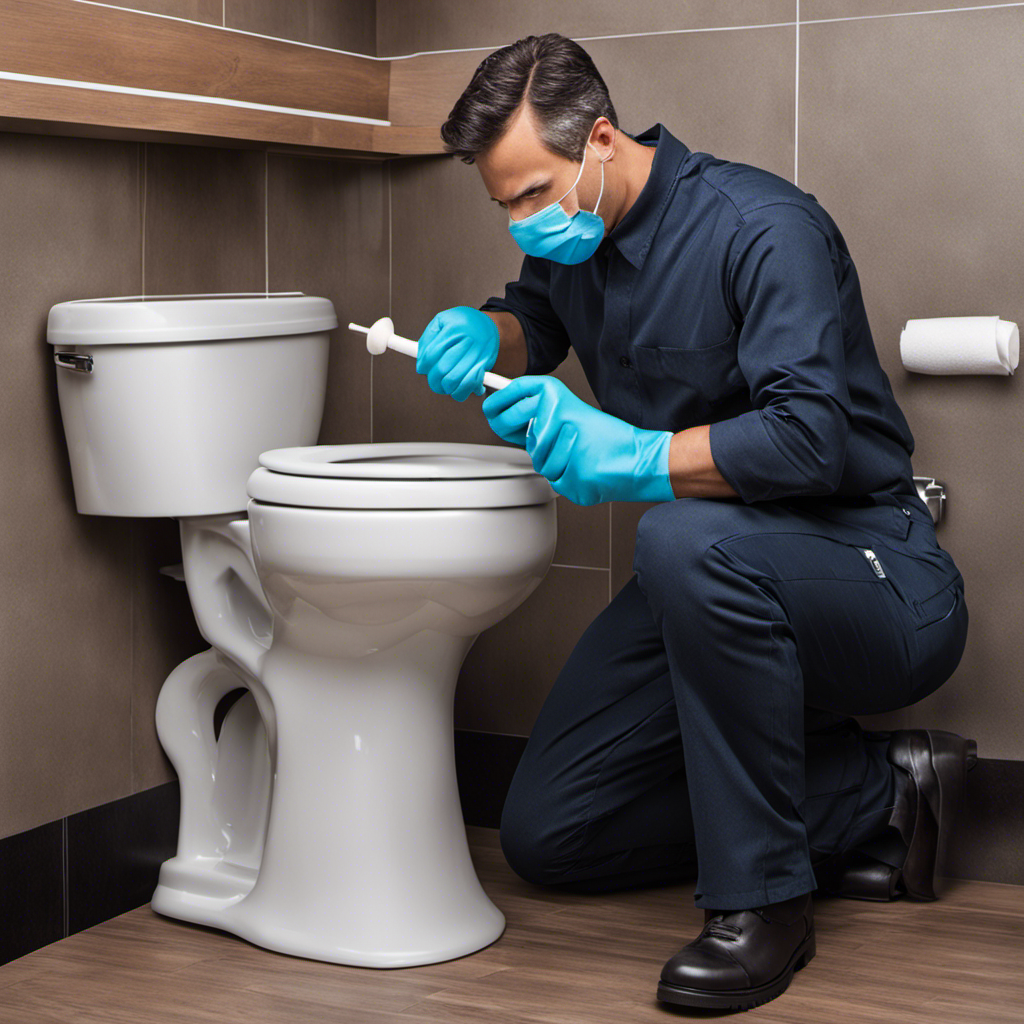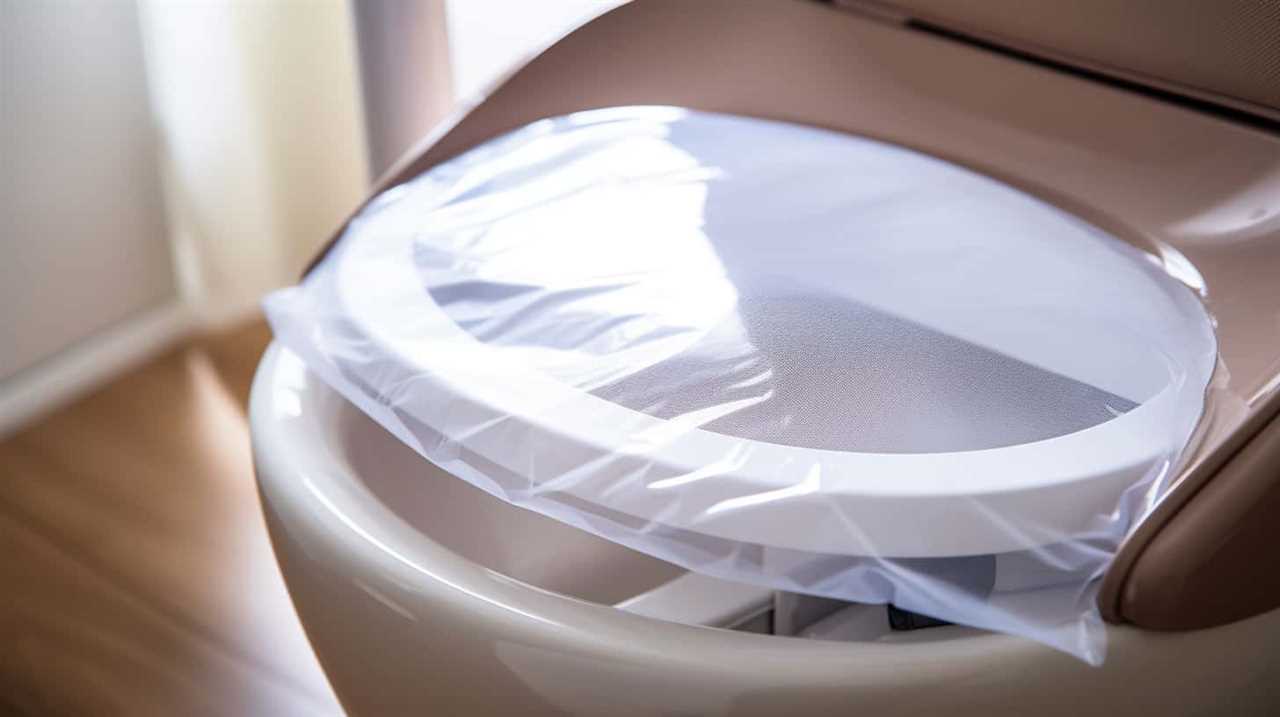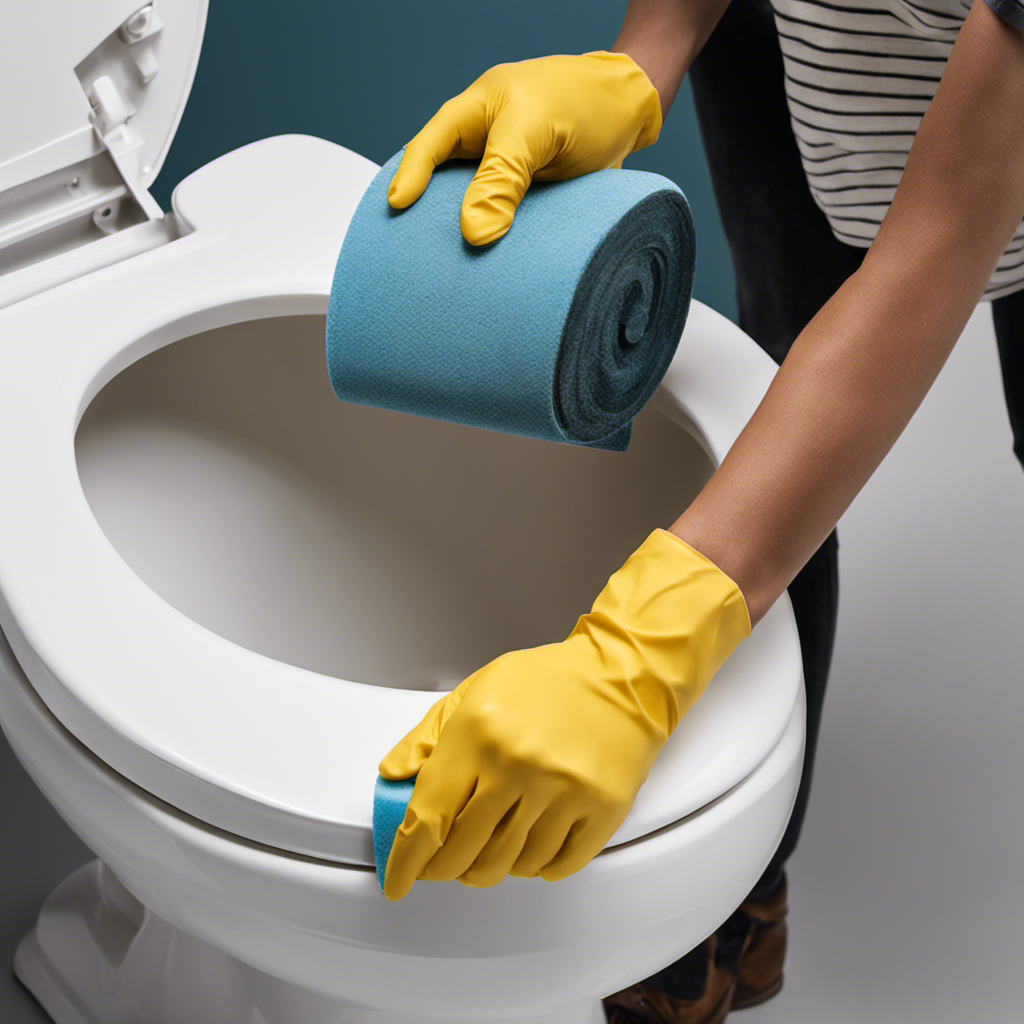So, you find yourself in the unfortunate predicament of needing to disconnect a toilet. Don’t worry, my friend, I’ve got you covered.
In this handy guide, I’ll walk you through the steps to successfully disconnecting a toilet with confidence and ease.
We’ll start by gathering the necessary tools and materials, then move on to shutting off the water supply and removing the tank.
From there, we’ll tackle detaching the toilet bowl from the floor and ensuring proper disposal of the old porcelain throne.
Let’s get this dirty job done, shall we?
Key Takeaways
- Pliers, wrench, and bucket are essential tools for disconnecting the toilet.
- Shut off the water supply by turning the shut-off valve clockwise.
- Remove the toilet tank before detaching the toilet bowl from the floor.
- Proper disposal of the old toilet is important and should be done following local regulations.
Tools and Materials Needed
To disconnect the toilet, you’ll need a pair of pliers, a wrench, and a bucket. These tools are essential for properly disconnecting the toilet from the floor.
Toilet disconnecting techniques may vary depending on the specific problem you’re troubleshooting. For instance, if you’re dealing with a leaky toilet, you’ll need to disconnect the water supply line and remove the tank. On the other hand, if you’re fixing a clog, you might only need to remove the bowl.
Regardless of the issue, having the right tools is crucial. The pliers are useful for loosening nuts and bolts, while the wrench helps in removing the water supply line. Lastly, the bucket is necessary to catch any water that may spill during the disconnection process.
Now that we have all the tools ready, let’s move on to the next step: shutting off the water supply.
Shutting Off the Water Supply
You can easily shut off the water supply by locating the shut-off valve and turning it clockwise. The shut-off valve is usually located behind the toilet near the floor.
It is important to shut off the water supply before disconnecting the toilet to avoid any water damage or flooding. Regular maintenance of the shut-off valve is essential to ensure it operates properly.
If you encounter any issues with the shut-off valve, such as a leak or difficulty turning it, it may need to be replaced. Troubleshooting common issues with the shut-off valve can include checking for any obstructions, ensuring it is fully open or closed, and tightening any loose connections.
Removing the Toilet Tank
When removing the toilet tank, it’s important to first shut off the water supply to avoid any potential water damage. Once the water is off, you can safely proceed with disconnecting the tank.
Start by removing the lid of the tank and set it aside. Next, locate the water supply line that connects to the bottom of the tank. Use a wrench to loosen the nut and disconnect the line. Be sure to have a towel or bucket handy to catch any residual water that may leak out.
Once the water supply line is disconnected, carefully lift the tank off the toilet bowl and set it aside. If you are replacing the toilet tank with a new one, you can transport it safely to the installation area.
Now, let’s move on to detaching the toilet bowl from the floor.
Detaching the Toilet Bowl From the Floor
First, make sure the water supply to the toilet is shut off to prevent any potential leaks.
To detach the toilet bowl from the floor, you will need a few tools: a wrench, a putty knife, and a bucket.
Begin by removing the caps covering the bolts at the base of the toilet. Use the wrench to loosen and remove the nuts holding the toilet to the floor bolts.
Once the nuts are removed, carefully lift the toilet bowl straight up and place it on a towel or newspaper to catch any residual water.
Inspect the wax ring and replace it if necessary. Remember to clean the floor flange and prepare it for the new toilet installation.
This process is essential for both toilet repair and toilet installation.
Proper Disposal of the Old Toilet
To properly dispose of the old toilet, gather the necessary materials for safe removal and follow local regulations for waste disposal.
When it comes to disposal methods, there are a few options to consider. One option is to take the toilet to a local landfill or transfer station that accepts bulky items. Make sure to call ahead and confirm their acceptance of toilets.
Another option is to contact your local recycling center to see if they accept toilets for recycling. Some centers may be able to recycle certain parts of the toilet, such as the porcelain.
It’s important to consider the environmental impact of your disposal method. By choosing recycling or proper waste disposal, you can help reduce the amount of waste that ends up in landfills, which benefits the environment in the long run.
Frequently Asked Questions
How Long Does It Usually Take to Disconnect a Toilet?
Disconnecting a toilet can vary in time, but it usually takes about 20-30 minutes. Some helpful tips for a smooth process include turning off the water supply, emptying the tank, and loosening the bolts.
Can I Reuse the Wax Ring When Reconnecting the Toilet?
When reconnecting a toilet, you can reuse the wax ring if it’s in good condition. However, there are alternative seal options available, like rubber gaskets, which provide a more reliable and long-lasting seal.
Is It Necessary to Wear Protective Gloves and Eyewear While Disconnecting a Toilet?
It is necessary to wear protective gloves and eyewear while disconnecting a toilet to ensure proper sanitation practices. Alternative methods may exist, but they may not guarantee the same level of safety and hygiene.
What Should I Do if I Encounter Rusted or Stuck Bolts During the Removal Process?
If I encounter rusted or stuck bolts during the removal process, I would first try using penetrating oil to loosen them. If that doesn’t work, I might need to use a wrench or pliers to carefully remove them.
Are There Any Specific Safety Precautions I Should Take Before Starting the Disconnection Process?
Before starting the disconnection process, it’s important to take safety measures. Make sure to turn off the water supply and wear protective gloves. The tools needed include an adjustable wrench and a bucket to catch any water.
Conclusion
In conclusion, disconnecting a toilet may seem like a daunting task, but it can be done smoothly with the right tools and knowledge. By shutting off the water supply, removing the tank, and detaching the bowl from the floor, you can successfully disconnect your toilet.
Remember to dispose of the old toilet properly, ensuring it is recycled or disposed of in accordance with local regulations. With a little patience and careful execution, you can tackle this task with confidence and have a functioning bathroom in no time.
So go ahead, take the plunge and disconnect that toilet!










